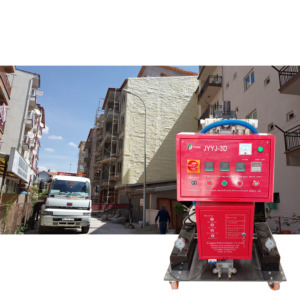
All categories
Featured selections
Trade Assurance
Buyer Central
Help Center
Get the app
Become a supplier

(1998 products available)




















































waterproof foam filler are essential materials in the construction and real estate industry, particularly for waterproofing applications. These materials are designed to prevent water intrusion and protect structures from moisture-related damage. waterproof foam filler are versatile and can be used in various settings, including residential, commercial, and industrial projects. They offer a range of benefits, such as durability, flexibility, and resistance to environmental factors, making them a popular choice among construction professionals. As the demand for sustainable and efficient building solutions increases, the development and innovation of waterproof foam filler continue to evolve, providing more advanced options for waterproofing needs.
There is a wide array of waterproof foam filler available on the market, each catering to different applications and environments. Common types include liquid membranes, sheet membranes, and cementitious coatings. Liquid membranes are favored for their ease of application and seamless coverage, making them ideal for complex surfaces. Sheet membranes, on the other hand, offer robust protection and are often used in roofing applications. Cementitious coatings are known for their strength and are typically applied in areas that require a rigid and durable solution. The selection of waterproof foam filler depends on factors such as the type of structure, climate conditions, and specific waterproofing requirements.
waterproof foam filler are designed to provide a barrier against water infiltration, ensuring the longevity and integrity of structures. Key features include resistance to UV rays, chemical stability, and flexibility to accommodate structural movements. These materials help prevent issues such as mold growth, corrosion, and structural weakening caused by moisture exposure. Some waterproof foam filler offer additional properties, such as thermal insulation and soundproofing, enhancing their value in construction projects. The ability to withstand extreme weather conditions and environmental stressors further underscores the importance of selecting the right waterproof foam filler for specific applications.
The composition of waterproof foam filler is crucial in determining their performance and suitability for various applications. They are typically made from polymers, bitumen, and other synthetic compounds. Polymers such as polyurethane and acrylics provide flexibility and elasticity, while bitumen offers excellent adhesion and water resistance. Additives like fillers, stabilizers, and reinforcements are incorporated to enhance the mechanical properties and durability of waterproof foam filler . The formulation of these materials is tailored to meet specific requirements, such as temperature resistance, tensile strength, and elongation capabilities, ensuring optimal performance in diverse conditions.
Proper application of waterproof foam filler is essential to achieve effective waterproofing results. Preparation of the surface is a critical step, involving cleaning, priming, and repairing any defects. The choice of application method, whether spraying, brushing, or rolling, depends on the type of material and the complexity of the surface. Ensuring adequate coverage and thickness is vital to prevent water ingress and achieve long-lasting protection. In addition, attention to detail during installation, such as sealing joints and overlaps, enhances the effectiveness of waterproof foam filler . Regular maintenance and inspection are recommended to address any wear and tear, ensuring continued performance and protection over time.
When selecting waterproof foam filler for your construction project, it's crucial to consider the specific needs of the structure and the environmental conditions it will face. The type of substrate, expected water exposure, and temperature fluctuations are all factors that influence the choice of materials. For instance, if a project involves areas prone to high humidity or frequent rainfall, selecting waterproof foam filler with high moisture resistance and flexibility is essential. Additionally, understanding the compatibility of these materials with existing structural elements ensures a seamless integration and effective waterproofing solution.
The longevity and maintenance requirements of waterproof foam filler should also be taken into account. Some materials may require periodic reapplication or maintenance checks to ensure continued performance, while others are designed for long-term durability with minimal upkeep. Evaluating the lifecycle cost versus the initial investment can help in making an informed decision. Moreover, the ease of application and availability of skilled labor for installation can further influence the choice of waterproof foam filler , as complex systems may necessitate professional handling.
Key considerations include the type of substrate, expected exposure to water, temperature variations, and compatibility with existing structural elements. The choice of waterproof foam filler should align with these factors to ensure effective waterproofing.
Ensuring the longevity of waterproof foam filler involves selecting materials with proven durability, conducting regular maintenance checks, and reapplying the materials as necessary. It's also important to follow the manufacturer's guidelines for application and upkeep.
Yes, there are eco-friendly waterproof foam filler options available that are made from sustainable materials and designed to minimize environmental impact. These may include products with low VOC emissions or those that are derived from renewable resources.
Challenges in applying waterproof foam filler can include ensuring proper surface preparation, achieving adequate coverage and thickness, and sealing joints and overlaps effectively. The complexity of the surface and the method of application can also present challenges.
Yes, waterproof foam filler can be used in both new construction and renovation projects. They are versatile and can be adapted to various structural conditions, whether it's integrating into new builds or retrofitting existing structures for enhanced moisture protection.